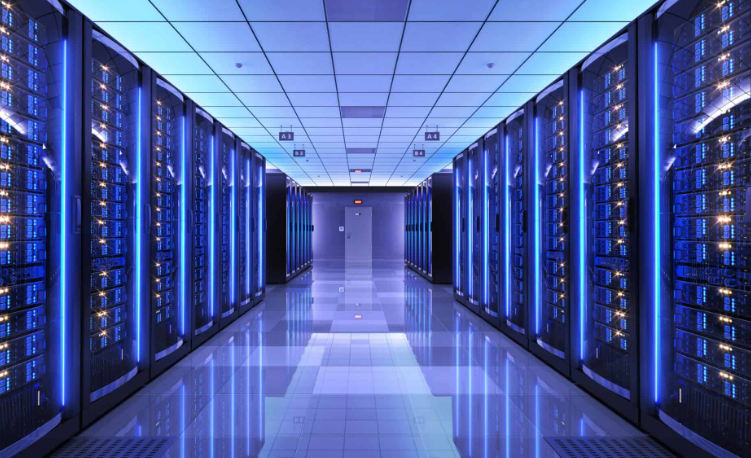Servers are the crucial foundation of a high-performing and resilient IT system that handles a large volume of data and applications. This is crucial for the functioning of contemporary operations. In the past, businesses have traditionally depended on data centres to house rack mounted servers in order to fulfil their requirements. However, a new ally has arisen in the form of tower servers. They have a vertical orientation and look like typical computer towers found on office desks. This specific design allows for seamless integration into office environments. They are ideal for small to medium sized businesses looking for cost effective solutions that provide strong performance.
Let’s look at the points below which explain why tower servers are the future of business IT infrastructure.
Compact and Vertical Design
The integration efficiency is improved with the vertical positioning of tower servers. This enables a more efficient and simplified process of implementation and administration. These servers usually feature access without the need for tools and conveniently reachable components. This intelligent simplification enables easier hardware upgrades, maintenance, and troubleshooting. IT staff members are able to conveniently access the inner workings of the server. This helps to minimise downtime when making hardware modifications or repairs.
The ease of setting up tower servers is also apparent in their simplicity. The chances of having messy cables are greatly reduced. This efficient technique not only reduces installation time but also enhances server airflow.
Easy Scalability
These servers are designed with a flexible structure that allows for easy and seamless growth. Lenovo significantly enhances workload performance with the latest 4th gen Intel Xeon scalable processors, surpassing the capabilities of previous generation systems. These servers feature numerous expansion slots and drive bays, offering generous space for future expansion. They have the ability to adjust to evolving business needs smoothly and with little interruption.
|
SERVER TYPE |
TOWER SERVER |
RACK SERVER |
|
FORM FACTOR |
Standalone, vertical orientation. |
Designed to be mounted in a rack, horizontal orientation. |
|
SIZE |
Larger form factor. |
Smaller form factor. |
|
SCALABILITY |
Up to 2 sockets and 8-12 drive bays. |
Up to 8 or more sockets and hundreds of drive bays. |
|
MAINTENANCE |
Accessing components for maintenance and upgrades is made simpler. |
It may be necessary to partially disassemble components that are more difficult to access. |
|
NOISE |
The larger size and increased space for fans result in a quieter operation. |
Increased noise levels. This results from a more compact arrangement of components and greater number of cooling fans. |
|
COST |
More affordable than traditional rack servers. |
Rack servers are pricier than tower servers. |
Lower Upfront Cost
Tower servers are a cost effective alternative to conventional rack mounted solutions or intricate infrastructure configurations. The cost of acquiring these servers at the beginning is considerably reduced. This factor renders them a viable choice for all sized businesses that have restricted budgets for IT. The reduced initial expense permits these establishments to allocate resources strategically. They have the option to allocate funds to other vital areas of their business while ensuring they have sufficient computational capability for their operations. This simplicity eradicates the necessity of costly retrofits or intricate cabling installations. Thereby, further lowering the overall expenses of the installation.
Used for A Wide Range of Applications
Tower servers offer the essential computational ability and storage capacity to efficiently manage everyday responsibilities. The clever design of these devices enables them to easily fit and blend in with office settings. This guarantees convenient availability and effective administration for daily tasks. These servers are capable of effectively handling key applications for businesses of all sizes, ranging from small companies to larger corporations. This helps to enhance the efficiency of operations and boost overall productivity.
Easier to Access and Maintain
Tower servers are characterised by a design that has been purposefully crafted to promote user-friendliness with regard to accessing the internal components. These servers offer a more simplified and intuitive methodology. The ease of accessibility afforded by this system enables information technology personnel to efficiently address troubleshooting issues with minimal associated intervals of unavailability. The inherent characteristics of these servers facilitate enhanced visualisation of the server’s internal structure. This ultimately diminishes the probability of errors that may arise during the process of maintenance or upgrades.
Future-Proofing
To ensure the sustainability of a business as it develops and transforms, it is essential to have an IT infrastructure that is capable of adapting to its evolving demands. Tower servers feature a flexible and expandable design. This allows for increased size and functionality. As the amount of data handled by businesses grows, these servers are capable of effortlessly adapting to accommodate these changes. Businesses can gradually enhance their servers by utilising the multiple expansion slots and drive bays available for incremental upgrades.
These servers also remove the necessity for different and specialised hardware configurations. This eliminates complexity in IT management and lowers expenses. This flexibility guarantees that businesses can adopt emerging technologies and industry trends.
Key Takeaways
Tower servers are a highly practical option for small to medium-sized businesses due to their distinct design and compact size. Office environments can seamlessly incorporate them without requiring exclusive data centres. This adaptability permits businesses to modify their IT infrastructure according to evolving requirements. Therefore, organisations can confidently and flexibly face the challenges of the future.

